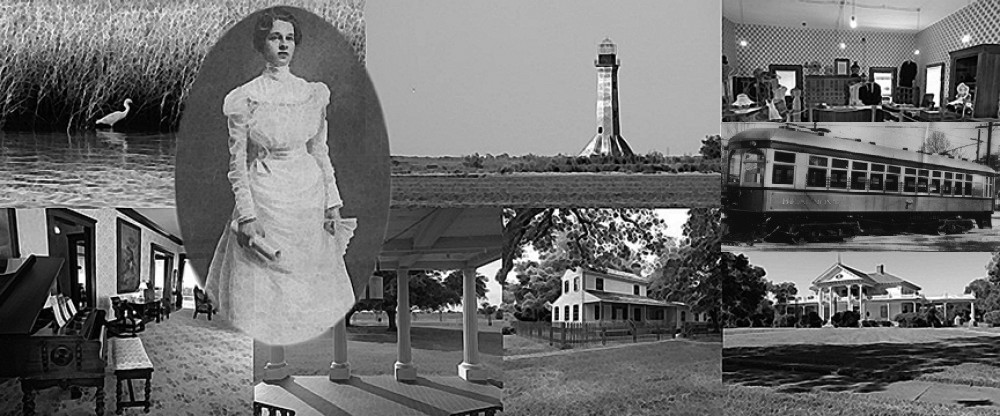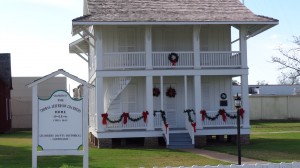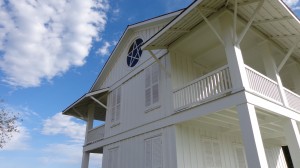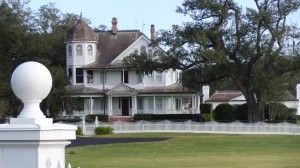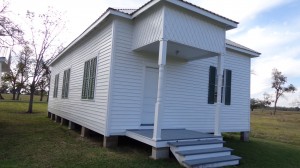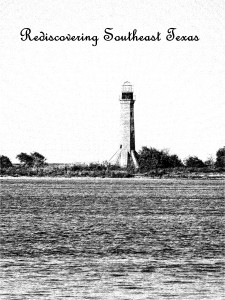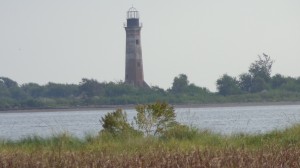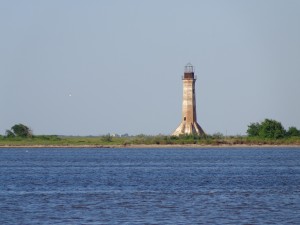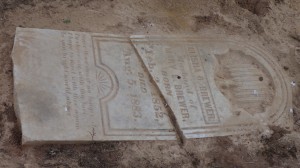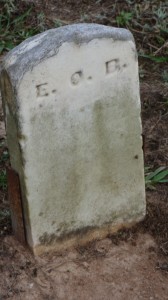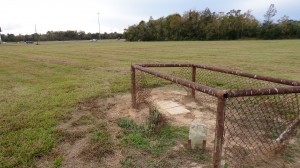If you’re like me, Anahuac is an exit sign off the I-10, which you pass as you go to and from Houston. Yes, you may notice a few old buildings lined up next to the post office, and if you’re really observant, you may see the old church that sits in the background amongst the many old oaks along the streets. A thought might enter your mind to visit this place one day and find out what these old buildings are and why they were built in the first place. But, if you’re like me, your life will get in the way, and you will forget—until your next trip to Houston.
Well, let’s flashback to last year. I acquired a job in Anahuac itself and my travels took me much farther than Exit 813 by the McDonalds. I found out that Anahuac is actually about seven miles south of the Interstate. So every other week, I travelled to this city, oblivious to its rich historic past.
One day, I made a wrong turn and ended up near the Chambers County courthouse. An odd old house caught my eye. It was two-story dwelling with nice porches and a very interesting window. I immediately stopped and felt compelled to investigate.
The house had belonged to a certain Thomas Jefferson Chambers, a lawyer, land speculator, and namesake for Chambers County.
Fast-forward to a few weeks ago when I took a trip to Anahuac to spend the day getting to know its sites and places of interest. And what a day it was. I found out that the Chambers County Historical Commission has a museum located across the street from the Chambers House. It is filled with photos and memorabilia of early families, landowners, and the history-makers of the past few centuries. It’s interesting to note that most of these people’s names are familiar to us from roads, bayous, and such, but most of us are unaware of the historical impact they’ve made. I guess that’s true for wherever you live.
Another plus to visiting this museum was how insightful and knowledgeable the docent was in explaining each photo and artifact. This in itself makes the visit worthwhile.
After spending time at the museum, we were lucky enough to have the Chambers House opened up for us to tour. This house, although small, was intriguing to me. From the large porches and spiral stairwell to the Texas Lone-Star window, I could see myself living there. I also enjoyed the period furnishings in the house, which were all decorated for Christmas to boot. 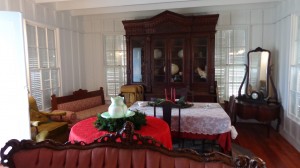
Our next stop was Fort Anahuac. Sadly, nothing is left of the fort, but there are markers explaining the history. (Note: Fort Anahuac was the site of the first armed confrontation between the Anglo-Texan and Mexican troops in June of 1830.) The bluff that the fort sat on was also the site for those immigrating to what was then Mexico. As an aside, the immigrants of the time were required to pay taxes upon arrival!
Before our final stop, I took a back road and discovered an old cemetery, along with a row of oaks, which had been watching over the area for multiple centuries. It was just a beautiful sight to see, particularly since they were decorated with Spanish moss, which was hanging from their branches.
Near the Wallisville Heritage Park (you remember those old buildings and the post office on the highway?), we came across a house that I never knew existed. It is simply a wonderful structure—unfortunately it is private, and we were not able to tour. After doing some research and asking the docent at the Wallisville Heritage Museum, I found out that the house is the Archie and Effie Middleton House circa 1906. Their son, John Middleton, one of the founders of Heritage Park, lives there. 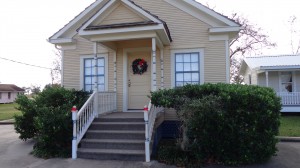
Finally, after having passed it multiple times over the years, we arrived at the Wallisville Heritage Park. This private nonprofit organization was founded in 1979 by John Middleton and some others who were interested in saving the Wallisville town site. A few buildings were saved, moved to their current site (on the Interstate) and restored. One treasure is the old Wallisville schoolhouse circa 1869.
Just like the Chambers County Historical Commission Museum, there are a lot of interesting artifacts and tons of old photos. It is a memorial to a town that was nearly forgotten, as many are in our history. But thanks to John Middleton and those concerned citizens who took it upon themselves to save our history, these artifacts have been preserved.
As our tour of Anahuac/Wallisville’s interesting and historic sites came to a close, I felt certain I would be back again. There is much more to see. I guess I’ll need to call Houston next time and tell them I’ll be a little late.
